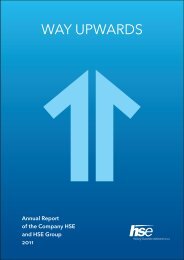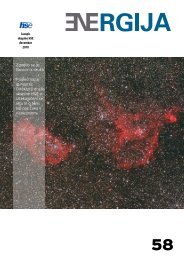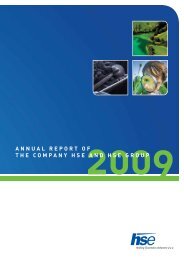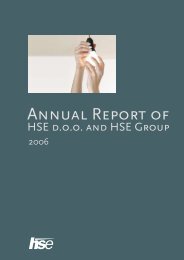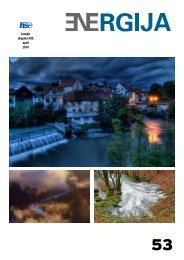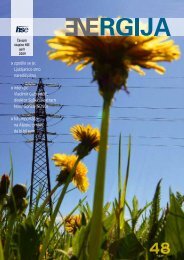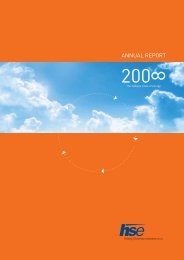Annual report - HSE
Annual report - HSE
Annual report - HSE
You also want an ePaper? Increase the reach of your titles
YUMPU automatically turns print PDFs into web optimized ePapers that Google loves.
5.5.7.5 Long-term investments in associates and jointly<br />
controlled companies<br />
Investments in associates are investments in which the Group has an important influence<br />
and usually its stake in such company ranges between 20 and 50%.<br />
Investments in jointly controlled companies are investments in which the Group controls<br />
the operations of such companies together with other owners, namely on the basis of<br />
contractually agreed division of control.<br />
Investments in associates and in jointly controlled companies are carried at cost in<br />
consolidated financial statements.<br />
In consolidated financial statements, the investments in associates and jointly controlled<br />
companies are accounted for using capital method.<br />
5.5.7.6 Financial instruments<br />
Financial instruments include the following assumptions:<br />
• non-derivative financial assets;<br />
• non-derivative financial liabilities;<br />
• derivatives.<br />
5.5.7.6.1 Non-derivative financial assets<br />
The Group’s non-derivative financial assets comprise available-for-sale financial assets,<br />
receivables, loans and cash and cash equivalents.<br />
Financial asset is derecognised when contractual rights to cash flows from this asset are<br />
discontinued or when the rights to contractual cash flows from the financial asset are<br />
transferred on the basis of a transaction in which all risks and benefits from the ownership<br />
of financial asset are transferred.<br />
Available-for-sale financial assets<br />
Available-for-sale financial assets are those non-derivative financial assets that are<br />
designated as available for sale or are not classified as loans and receivables or financial<br />
assets at fair value through profit or loss.<br />
Available-for-sale financial assets are recognised after the trading date.<br />
They are carried at fair value, if the fair value can be established and the profit or loss<br />
during valuation is recognised directly in other comprehensive income or equity, except<br />
loss due to impairment. These are recognised so that potential accumulated loss, which<br />
is initially recognised in other comprehensive income and disclosed in fair value reserve,<br />
is transferred to profit or loss. Subsequent increase in fair value of impaired available-forsale<br />
equity security is recognised under the fair value reserve.<br />
At derecognition of investment, the accumulated profit and loss recorded in other<br />
comprehensive income are transferred to profit or loss.<br />
In case the fair value cannot be reliably measured, since the range of justified fair value<br />
assessments is of significant importance and the probability of various assessments is<br />
difficult to be assessed, the Group companies measure the financial asset at cost.<br />
Loans and receivables<br />
Loans and receivables are non-derivative financial assets with fixed or determinable<br />
payments that are not quoted in an active market.<br />
5 Financial Report of <strong>HSE</strong> Group<br />
<strong>Annual</strong> Report <strong>HSE</strong> 2012<br />
176<br />
At initial recognition, loans and receivables are disclosed at fair value increased by direct<br />
costs of transaction. After initial recognition, loans and receivables are measured at<br />
amortised cost and decreased by the loss due to impairment. Loans and receivables are<br />
recorded in the consolidated statement of financial position as financial and operating<br />
assets and include granted loans, deposits, receivables due from buyers and receivables<br />
due from others.





